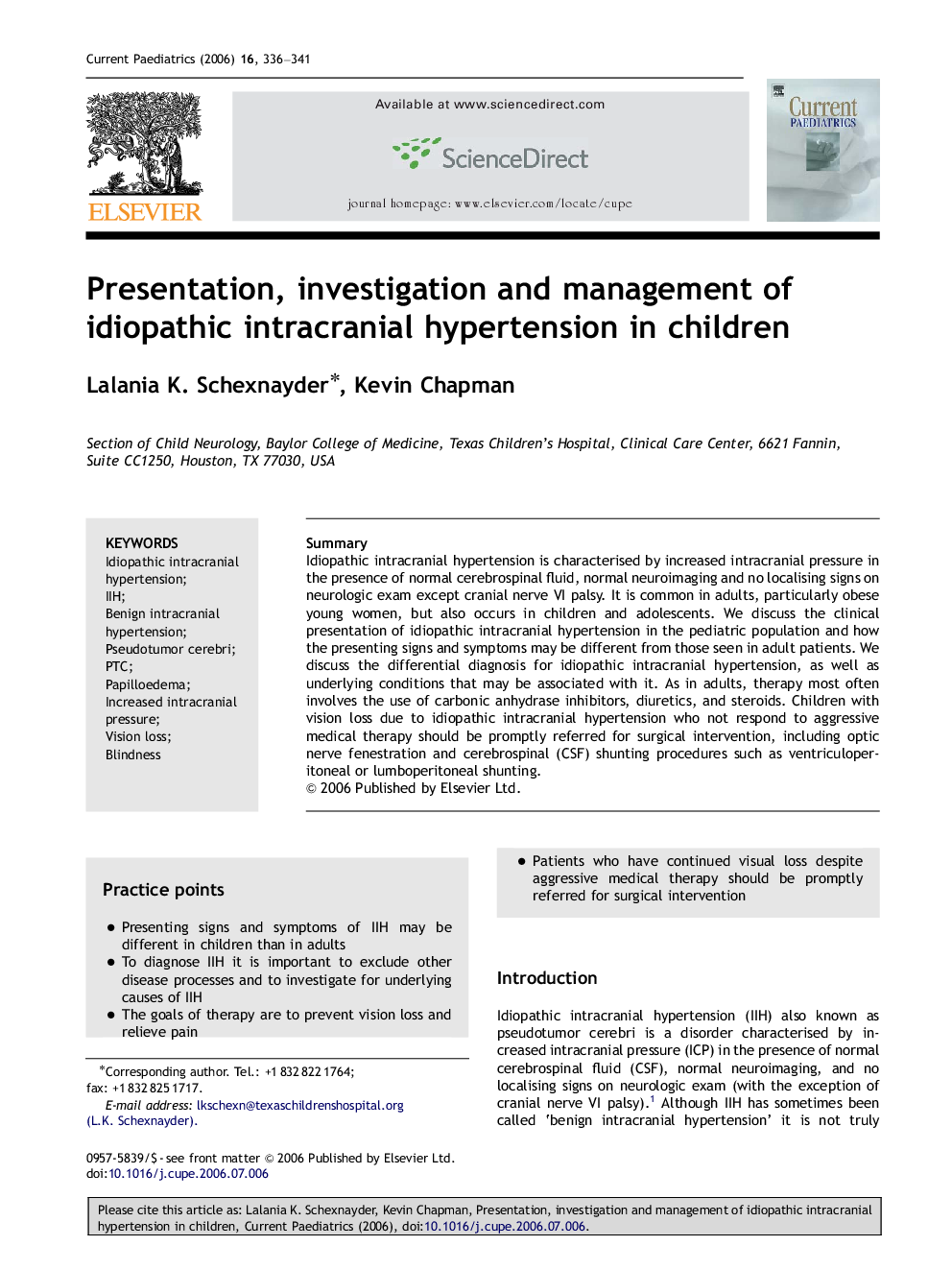| Article ID | Journal | Published Year | Pages | File Type |
|---|---|---|---|---|
| 4152239 | Current Paediatrics | 2006 | 6 Pages |
Abstract
Idiopathic intracranial hypertension is characterised by increased intracranial pressure in the presence of normal cerebrospinal fluid, normal neuroimaging and no localising signs on neurologic exam except cranial nerve VI palsy. It is common in adults, particularly obese young women, but also occurs in children and adolescents. We discuss the clinical presentation of idiopathic intracranial hypertension in the pediatric population and how the presenting signs and symptoms may be different from those seen in adult patients. We discuss the differential diagnosis for idiopathic intracranial hypertension, as well as underlying conditions that may be associated with it. As in adults, therapy most often involves the use of carbonic anhydrase inhibitors, diuretics, and steroids. Children with vision loss due to idiopathic intracranial hypertension who not respond to aggressive medical therapy should be promptly referred for surgical intervention, including optic nerve fenestration and cerebrospinal (CSF) shunting procedures such as ventriculoperitoneal or lumboperitoneal shunting.
Keywords
Related Topics
Health Sciences
Medicine and Dentistry
Perinatology, Pediatrics and Child Health
Authors
Lalania K. Schexnayder, Kevin Chapman,
